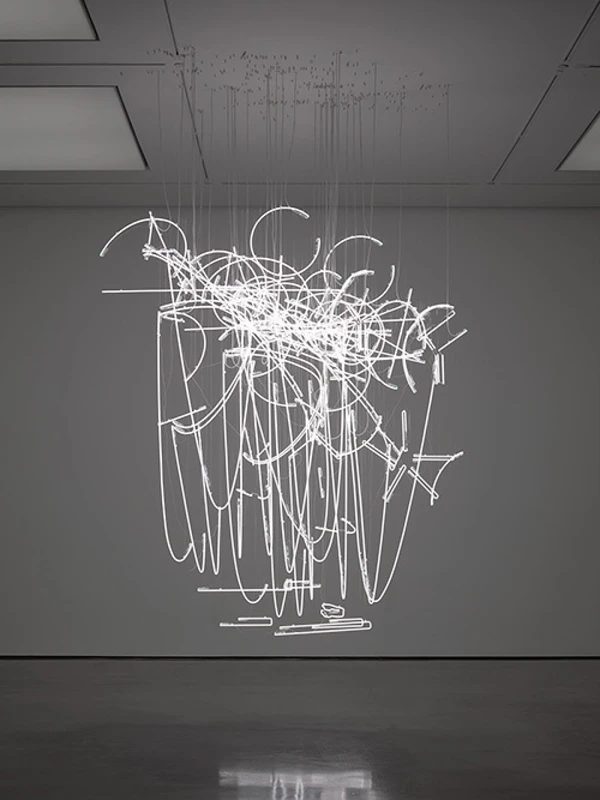Cerith Wyn Evans


b. 1958, United Kingdom
Welsh sculptor and filmmaker, born 1958
Cerith Wyn Evans' conceptual practice explores the way that ideas can be communicated through form, incorporating a diverse range of media including installation, sculpture, photography, film and text. He began his career as a filmmaker producing short, experimental films and collaborative works, but since the 1990s has created artworks that deal with language and perception, focusing with precise clarity on their manifestation in space. Evans employs strategies of exhibition making that are often site-specific, viewing exhibitions as a catalyst to produce a reservoir of possible meanings and discursive experiences.
His poetic work derives its refined aesthetic from a wide range of influences including film, music, literature and philosophy. Visual or textual sources and ideas are often repeated across different bodies of work, an indication of his desire to keep ideas in play or to bring them back to life as raw material for future use. He harnesses the potential of language to create moments of rupture and delight, where desire and reality conjoin, evident in his series of firework sculptures where wooden structures spell out open-ended texts and fleetingly burn over a designated period of time. These performative sculptures exist only as a durational event, but take on new life when documented through photographs or film. Likewise, in an ongoing series of neon text sculptures, he uses favourite passages of text or the subtitles from films to create open-ended, powerful works that produce a retinal after-image in the viewer.
Evans attempts to disrupt existing systems of communication, either through the practice of subverting certain given material forms, by altering spatial-temporal coordinates, or by adopting a communal rather than a singular authorial voice. In film and slide installations, for example The Curves of the Needle (2003), he manipulates sound to form a parallel ‘text’ to the visuals, where meaning is opened up by the unexpected slippage that occurs when the soundtrack is dislodged, changed or removed. With his series of chandelier sculptures he transforms these potent symbols of material wealth – whether minimal designs, modernist masterpieces or coloured, venetian glass antiques – into transmitters of morse code. The morse code, which is a translation of texts dictated by an adjacent computer, fills the room with a captivating otherworldly dance made of light and shadow.
Cerith Wyn Evans was born in 1958 in Wales and lives and works in London. He has exhibited extensively including solo exhibitions at Aspen Art Museum (2021), Pirelli HangarBicocca (2019), Museo Tamayo, Mexico City (2018); Duveen Galleries Tate Britain, London (2017); Museion, Bolzano, Italy (2015); The Serpentine Gallery, London (2014); TBA-21 Augarten, Vienna (2013); Bergen Kunsthall, Norway (2011); Tramway, Glasgow (2009); Inverleith House, Edinburgh (2009); Museo de Arte Contemporáneo de Castilla y León, Spain (2008); Musée d’art moderne de la ville de Paris (2006); and Kunsthaus Graz, Austria (2005). He has participated in the 57th Venice Biennale (2017); 4th Moscow Biennale (2011); 12th Venice Biennale of Architecture (2010); 1st Aichi Triennale, Japan (2010); 3rd Yokohama Triennale, Japan (2008); 9th Istanbul Biennial (2005); and 50th Venice Biennale (2003). In 2018 Evans won the Hepworth Wakefield Prize for Sculpture with his monumental work ‘Composition for 37 Flutes’, 2018.